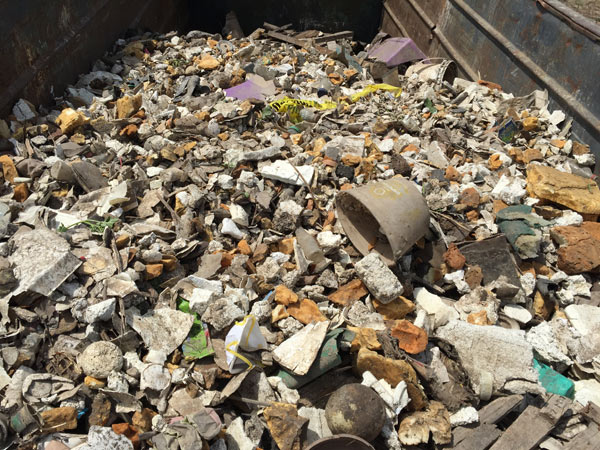
Styrofoam, styrofoam, styrofoam… Oh that ubiquitous, white, ever-spreading stuff that seems to just crumble into a thousand tiny little pieces, yet never disappear. From a distance, it starts to look like snow or large chunks of ice. Except, unlike snow, it is not pretty. Especially when it covers an entire open field near the Tijuana River Estuary, just mere feet away from protected breeding ground for a number of different birds.
On Sunday, June 28th, Surfrider San Diego’s No Border Sewage committee hosted its third cleanup for 2015 in the Tijuana River Valley.
We had 75 spirited volunteers - from throughout San Diego and Tijuana - come out to join the efforts. By the end of our near 4-hour-long cleanup, we collected 2.27 tons of trash and debris - most of it styrofoam and building materials.
We’ve had a few of these cleanups so far in 2015. And with each one, we always walk into the designated cleanup site and are taken aback by the amount of debris that is there. But this one…this cleanup site was incredible.
On what normally would have been a bed of reeds and marsh from the wetland, lay a top blanketing, nearly 6-inch deep, of trash, packed so condense that you could barely see the natural habitat beneath it. The scene looked like a literal dumping ground for all sorts of products - building and packaging materials, toys, shoes, clothing, cosmetics, bottles, pharmaceuticals - even needles.
It is astonishing (and not in a good way) to think that all of this initially washed down the watershed, spilling out from different culverts along the way, culminating in this huge second-rate landfill in the middle of the estuary. If you have ever wanted a prime example of man’s impact on the natural world, this is it - with all of its futuristic, foreshadow-like hints at what our planet may eventually look like if we don’t change our ways.
Science teaches us that mass can neither be created nor destroyed; it can only be transformed. You boil water, that water turns into vapor. The atoms do not disappear, instead they transform into something else. This same implication applies to consumer waste as well. As humans we seem to think that if we remove something from our sight, then it no longer exists - at least it no longer exists to us. But this “thing” has to go somewhere. It cannot be destroyed.
When we recycle, our recyclables get transformed into another use. When we compost, our composted items get transformed into soil that we can use to create new life. However when we discard trash and debris that can neither be recycled nor composted, it just gets moved. From your space to another space. The only thing that "transforms" is the physical location that trash resides in. And it just sits there.
It is time that we start changing our viewpoint on the items we throw out. Are there items we can dispose of in different ways? Can we recycle or compost them? Can we choose to purchase items that are recyclable or compostable? Can we forgo the styrofoam packaging peanuts when we ship things? Can we carry our takeout on its own, and leave the plastic bag behind?
Or how about shifting our focus to how long we use items? Can we keep things for greater periods of time? Do we always need a new “this” or “that?” Can we live with less?
The border sewage issues that plague the Tijuana River watershed of course require policy work and research involving different agencies on both sides of the border. While interesting and rewarding to get involved with, sometimes as a concerned citizen you just want a way to make a difference in your everyday life. Adopting a more progressive view of how we look at trash, its disposal and our own usage of items, is easy for you to look at on a personal level. You make decisions regarding these things everyday. And you can share your decisions with your friends, families and communities.
So let’s start looking at what we throw away. Let’s start dissecting our lives and being conscious consumers, thinking about what our purchasing habits may mean for the future of our health and our planet. Let’s start reusing more and throwing away less. And for goodness sake, let’s start with styrofoam.
—————————————————————————————————————————————————————
No Border Sewage meets regularly on the first Tuesday of each month from 6:30-8pm at our Surfrider San Diego office. Join us to learn more and get involved! And make sure to stay tuned for the upcoming 6th-annual Tijuana River Action Month (TRAM) put on by the Tijuana River Action Network (TRAN). It will be a month-long series of educational and stewardship events designed to help you learn more about the issues at hand. For more information, visit the TRAN website.




